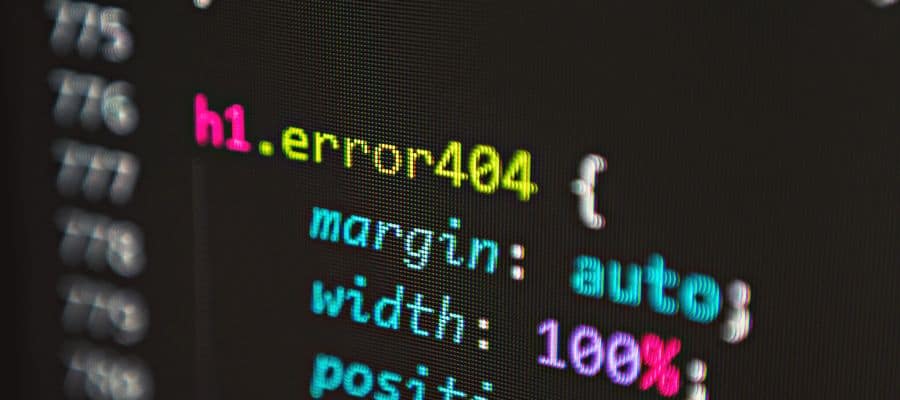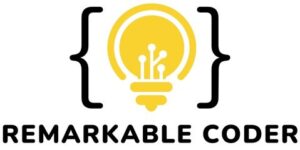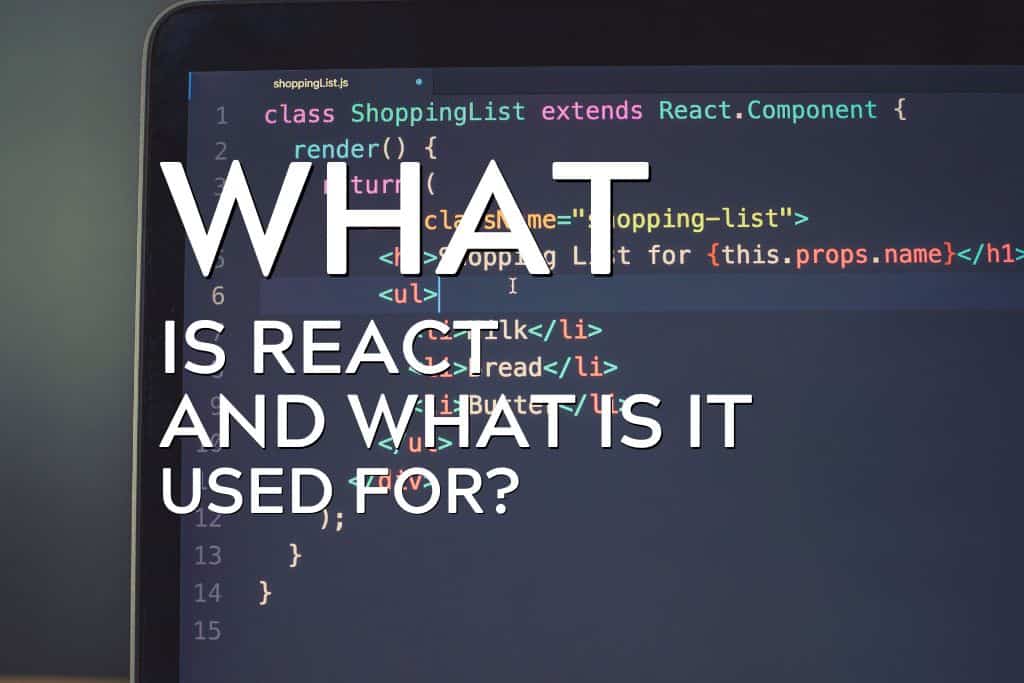One of the best tools for creating interactive web pages and apps, React has surged in popularity ever since its inception. It even formed the basis for React Native which is a framework for creating native mobile apps with JavaScript. Developers and companies love React because of the modular and free-flowing nature that makes it easy to modify, maintain, and scale up along with a growing project.
But what is React and what is it used for? React is an open-source JavaScript library used for UI development on the front end, originally created by Jordan Walke at Facebook in 2011. React uses a component-based architecture and concerns itself primarily with the “view” layer of MVC, it also features a virtual DOM system for improved performance.
There are so many other libraries and frameworks for front-end development with JavaScript, but none deliver the combination of features that React has. This library is unique in how it’s structured, and you can easily bolt on additional libraries to add features such as state management/ routing. React is also one of the best-performing libraries because of virtual DOM and excels as a UI design library for web pages/ apps that update frequently.
What Is React And What Is It Used For?

React is a JavaScript library built around independent, encapsulated entities called “components”. Each component contains logic and UI within the same file. Logic is written in JavaScript, while styling and structure are provided by HTML + CSS.
Each component has a state and prop, with React promoting a one-way data flow that makes state management easier. React uses the declarative programming paradigm, meaning you tell the code how you want your view rendered. And then React updates your view based on changing data.
In React, developers don’t directly interact with the DOM. Instead, a virtual DOM is created in memory. This virtual DOM is manipulated by a diff algorithm that compares “snapshots” whenever the DOM is changed.
Based on changes to certain nodes of the virtual DOM, the real DOM is updated when necessary. This significantly boosts performance, since React only modifies specific parts of the DOM rather than going through the entire thing from top to bottom.
Is React Frontend Or Backend?
React concerns itself only with the client-side rendering of UI and interactive logic. So it’s a frontend library that runs on the user’s web browser or window. However, React can make calls to the backend like most other front-end libraries/ frameworks.
All languages used in React are frontend- JavaScript, HTML, and CSS. Typically, developers use React in combination with a backend such as Node (or Express, which is a framework built on NodeJS). React can also be integrated with other popular frontend libraries like Bootstrap and Material-UI.
5 Examples Of What You Can Build With React

Realtime chatting and social media application
This is what React excels at, creating interactive apps that handle frequent data updates. Let’s say you have a real-time chat with lots of people interacting with each other, typing constantly, and sending emojis. React’s excellent render engine will deliver these updates with minimal lag.
Even something slightly more “intermediate-level” such as a WhatsApp clone can be built with React. And it’s a nice learning project to understand how this library works. You can implement contacts, photo/ GIF sharing, and a Node server in the backend to handle data transfers.
If you create a basic social media app with a newsfeed and user authentication system, React Native is a nice fit. You can code stuff in JavaScript/ JSX and get great performance on mobile devices. AWS Lambda and Firebase will function well for notifications, or if you want real-time data handling.
E-Commerce Site or Web Shop
Online shopping and on-demand services have revolutionized how we use the internet. Everything from groceries and food to household appliances can be browsed, added to a cart, and ordered via a customizable schedule decided by the user. Creating a basic shopping site in React is a good way to test your practical skills and ability to design something of value that matches industry trends.
It doesn’t have to be a large marketplace that integrates multiple services into one platform. Start with something small, such as a mock app for a local restaurant or retail store. Users create accounts, log in, browse through an inventory, and add items to a cart.
A React-based framework such as Gatsby can be used to set up the front end for your storefront. It supports server-side rendering, lets you preview and deploy code in real-time, and can integrate a variety of APIs/ services. If you want a rapid product search interface so your users can easily browse through the store inventory, the Algolia search engine is a great fit.
Video Sharing Platform Similar to Tik-Tok
Imagine Youtube in its early days, when it was a simple place where people with their camcorders recorded cat videos (among other weird stuff). You’ll need some kind of ranking and content categorization system to help users find the type of video they’re looking for. A video player interface must also be designed.
You can create an app for longer videos, similar to Bitchute. Or your app can be focused on short clips- similar to TikTok or Youtube Shorts. Create React App is a good fit for single-page applications since it’s designed to create a learning environment for React users.
Gatsby or Next.js can be used for the UI. The react-player package from NPM will let you play URLs from a variety of sites including Youtube, Facebook, DailyMotion, Vimeo, etc. It has various configuration options for player window size, picture-in-picture, looping, etc.
Personal Blog With Interactive Portfolio
It will be like your very own Medium or Tumblr, designed in React. You can use Create React App like you would for any SPA. The site will need a dashboard, comments section, and log-in system.
You should also be able to edit posts, and delete comments. A node server is a good choice for handling the backend. Styling can be done with an open-source framework such as Tailwind CSS.
Online Image Compressor
Often you’ll need to compress an image that was originally captured on your phone so it can be uploaded to a website or app. There are plenty of free image compression sites out there that accept an image and use some kind of compression algorithm to generate the output in your desired media format. You can create one such site with Create React App and the compressorjs package that can be installed via NPM.
Do You Need CSS For React?

Yes, as it’s one of the fundamental components of creating UIs and styling them. JavaScript provides the logic, HTML provides the structure, and CSS provides the style. Getting a solid foundation in both HTML and CSS is a good idea before you dip your toes into front-end web development with React.
Who Uses React?
Originally, React was designed and maintained by a small team at Facebook (now Meta). It was conceived to help create modular, scalable, and easy-to-maintain code for the growing Facebook Ads app in 2011. Over time, React has evolved into an industry juggernaut.
Many new features have been added, the improved React Fiber engine has been implemented. And it’s now developed by a global community of talented developers backed by many multinational tech firms. A lot of the tech companies who fund React’s development also use it within their frontends.
Facebook, Instagram, and Netflix are just some of the big names using React. The Yahoo! Mail client (owned by Facebook) also uses React. All of these companies love using React for its speed, modularity, and versatility.
Is React Difficult For Beginners?

It depends on how you start your learning process. If you’re completely oblivious to basic programming concepts, React can be quite hard. It’s also a bad idea to get into React before you know a decent bit of JavaScript, HTML, and CSS.
In the real world, React is rarely used in a vacuum. It’s almost always used in combination with other libraries and frameworks. This means you have to learn those as well, in order to be a useful developer for anyone looking to hire you.
Some of the things that make React so attractive, like its modular and flexible architecture, also make it complicated for beginners to understand. If you want to become good at React, you need to understand functional programming concepts, curried functions, higher-order functions, immutability, etc.
5 Benefits Of React
It’s Fast
React’s virtual DOM allows it to render views at a much faster rate than other JS UI libraries and frameworks. Every time a node changes in the DOM, React doesn’t “repaint” the whole browser view. It only changes that particular area within a copy of the DOM that’s stored in memory.
Views are changed based on this copy, or virtual DOM. Then, the real DOM is updated by comparing the changes between the current and previous state of the virtual DOM through a diff algorithm. By 2016, React got its new Fiber reconciliation engine which is even faster and better optimized.
React’s encapsulated, independent components with easy-to-understand state flow also help. All components have their necessary props and context, so React doesn’t have to scan the whole tree for relevant data whenever something changes on the page.
Declarative Nature
One of the reasons React is so dynamic and free-flowing is its use of the declarative programming paradigm. As a developer, you write React code based on what you want in your browser view rather than focusing on the “how”. In reality, everything ends up being imperative since the compiler has to create instructions for a processor telling it exactly how to do stuff.
Basically, declarative programming can be thought of as an abstraction layer on top of imperative programming. It can simplify the coding process and allows developers to approach problems in new and inventive ways. An example of declarative programming is the following SQL query- “SELECT*FROM users WHERE id <= 100”.
You’re asking or “declaring” what you want by telling SQL to retrieve the first 100 users registered in a database. How this code is implemented will depend on the SQL engine. As a developer, you don’t care how the user data is retrieved unless you’re trying to optimize the pipeline and improve performance.
Reusable Code
React components can be reused multiple times throughout your code to implement the same UI functionality. You can also share components from one project with another when you need a similar UI layout. A similar thing can be done in JavaScript through reusable functions, but React makes the process easier and more modular.
You can create a class for your reusable component and use that class wherever you want. If you want to create reusable components that can be shared across apps, check out Bit which is a toolchain for composable software development. Each component in React can be coded to manage its own logic and rendering.
Integrates Both JavaScript And HTML
JSX might seem like yet another overhead for your developers, but it’s actually an ingenious piece of kit that streamlines development once you’ve learned it. Fundamentally, it’s a JS syntax extension that lets you add HTML to your JavaScript code. There are both benefits and downfalls of using JSX.
You can use JSX to create React elements, by combining logic and UI into the same file. This creates some issues with the separation of concerns, but that can be tackled with experience. Anyone familiar with JavaScript and HTML will learn JSX quite rapidly.
Good Cross-Platform Compatibility
Because of its modular and flexible construction, React can be modified to run on just about any platform. Its motto is “learn once, write anywhere”. And React Native is the best example of this principle.
React Native lets you build native apps for iOS, Android, Windows, macOS, etc. by using JavaScript. There are also libraries like the Microsoft-developed ReactXP that lets you share code across mobile and Windows platforms.
Conclusion
I hope this article gave you a good understanding of what React is, and how it’s utilized within the greater realm of frontend UI development. React is almost always used in combination with various frameworks and libraries like React Router, Bootstrap, Material UI, etc. Learning React requires a fundamental understanding of JavaScript, HTML, and CSS. But if you do put in the time, being a frontend React developer has its benefits. React isn’t going away anytime soon and is being increasingly adopted by a wide range of companies. In the US, it isn’t uncommon for React developers to make upwards of $100K a year.

